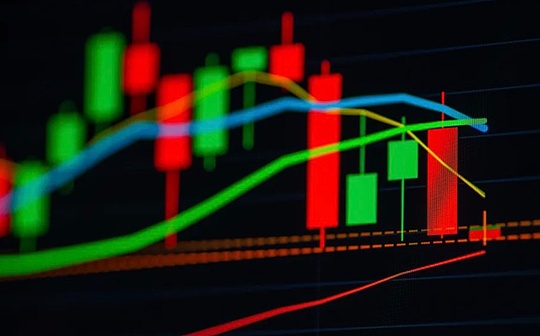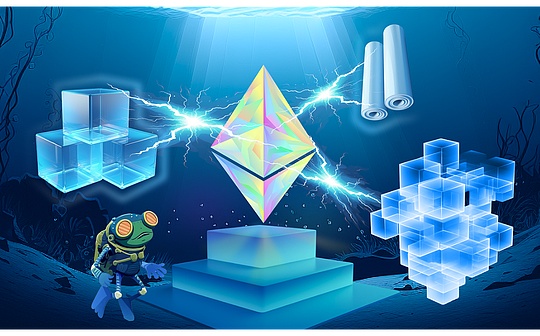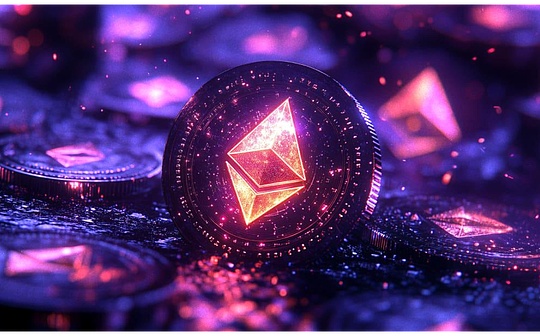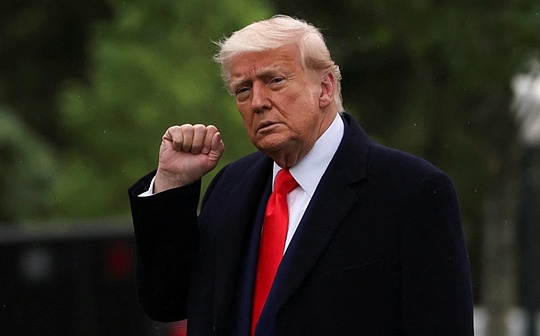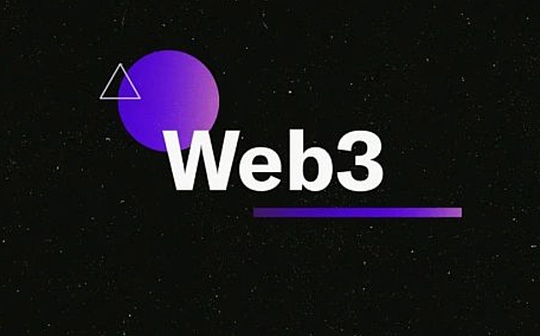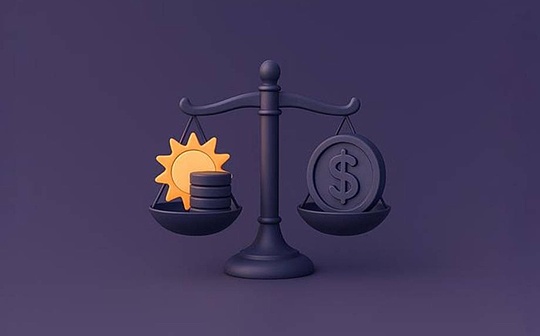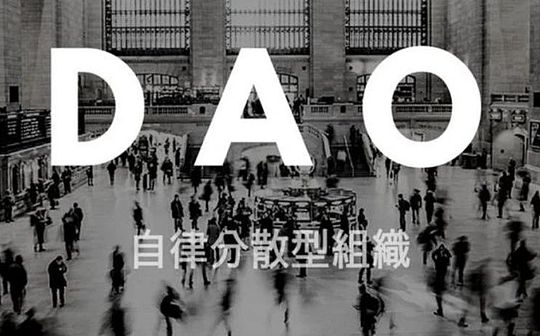
Author: Zhang Qun
introduction
DAO is an organizational form implemented using blockchain technology, and its core lies in the principles of decentralization and code as law.Unlike traditional organizations, DAO does not have a centralized management structure, but uses smart contracts to automatically execute rules to achieve organizational governance and operations.DAO is regarded as an important part of the infrastructure in the Web3 field.It supports remote collaboration and is especially suitable for open source projects.DAO provides an open, free and equitable way to organize, encouraging collaboration and sharing.
The concept of DAO was first proposed in 2013, but what really attracted widespread attention was in 2016, when a decentralized autonomous organization called “The DAO” became a hot topic.The DAO is a decentralized investment fund composed of smart contracts on Ethereum. Its goal is to invest and make decisions through smart contracts without central management.
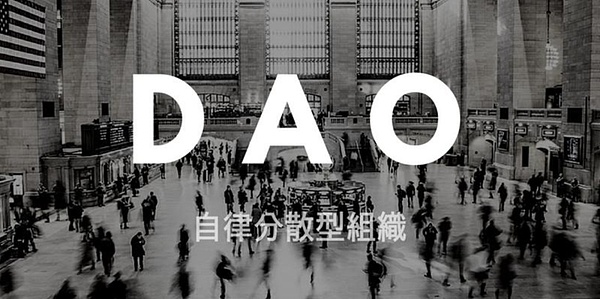
There is no consensus on the definition and core elements of DAO, but its concept as a cooperative community is widely accepted.The essence of DAO lies in its “automatic and spontaneous” characteristics, although most of the current DAOs rely on man-man rule.As of the end of 2023, the number of global DAOs has grown rapidly and has penetrated into many areas such as finance, entertainment, real estate and community governance.Originally popular in parts of North America and Asia, DAOs are now gaining attention worldwide, with many projects and organizations trying to use DAOs to build more decentralized and democratic organizational structures.
Key technologies of DAO
In DAO, each member can participate in the decision-making process, usually by the token holdings to determine the voting weight.This means that DAO’s decisions are made through the collective wisdom of community members rather than the will of a few.This transparent and democratic governance mechanism is an important source of its attractiveness.There is a lot of basic technical support for the implementation and operation of DAO, and Zhang Qun believes that the following are the key points:
1.Smart contract technology
The core of DAO must be based on smart contracts.Smart contracts play a central role in DAOs, which define the rules of an organization, the rights and responsibilities of members, and the mechanisms for voting and decision-making through smart contracts.Smart contracts ensure the automatic execution of rules and reduce dependence on central authority.The immutability and transparency of smart contracts ensure that once set, the rules will not be changed unilaterally unless they are changed through community consensus.
2.Blockchain technology
Blockchain is a more underlying facility for DAO. Whether it is governance or the economy on DAO, it needs to be implemented through blockchain.By running on the blockchain, DAO’s rules and decision records are kept on publicly verifiable ledgers, improving organizational transparency and trust.
3.Organize tokens
Members hold DAO tokens, representing their share of responsibilities and rights in the organization.These tokens can be used for voting, proposals and decisions, and can also be used as a yardstick for sharing results.However, the legal provisions in mainland China have strict restrictions on this, and many tokens are issued in the name of equity certificates.
Fund management is also one of the core elements of DAO.Unlike traditional organizations, DAO funds are usually managed through smart contracts.This approach improves transparency and security of fund use, while also reducing the risk of fraud and abuse.
4.Governance Model
DAO’s governance model defines how organizational members participate in decision-making and management of transactions and how they get rewards.This may include voting mechanisms, proposal procedures, membership verification, task execution and financial allocation, etc.An effective governance model is key to ensuring that DAOs operate effectively.The success of DAO also depends on the active participation and consensus building of members, and members need to remain enthusiastic in the decisions and affairs of the organization.
In short, the core elements of DAO are decentralized governance structure, consensus-based decision-making systems, automatic execution of smart contracts, and transparent and secure fund management mechanisms.These factors work together to make DAO a new and promising form of organization.
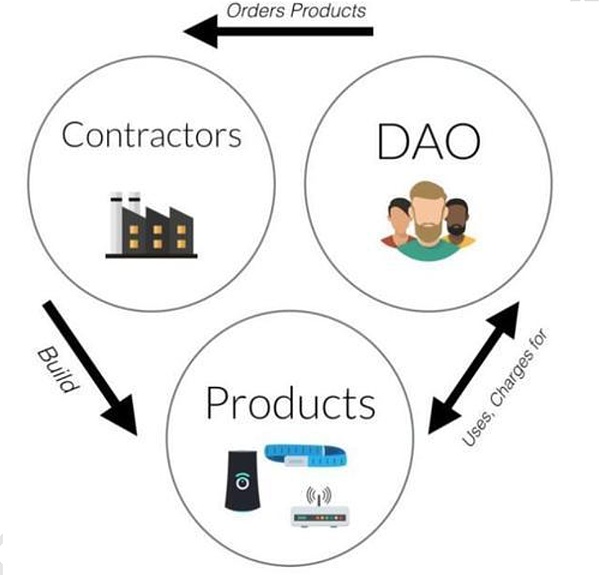
The core of DAO is the governance model
The goal of DAO is to accomplish specific work or achieve a long-term vision.Zhang Qun believes that the governance model includes two core points: decision-making governance and task governance.Many DAOs have made a lot of exploration in decision-making governance, and decision-making models are constantly evolving.The original governance model mostly relies on token holdings to determine voting rights, while later practices began to introduce more complex and fair governance mechanisms such as reputation systems, prediction markets, and quadratic voting.
Reputation System
Reputation system is a mechanism used to measure and represent the influence or contribution of members within an organization.It is usually allocated based on factors such as member behavior, degree of participation, contribution to the project, etc.The purpose is to encourage and reward members who contribute to the DAO while ensuring decision-making power is in the hands of experienced and trustworthy members.This can improve the quality of decision-making and promote the long-term healthy development of the organization.
Forecasting the market
Predictive markets are a manifestation of collective wisdom that allows members to bet or forecast for specific future events or outcomes.Utilizing forecasting markets can help assess the potential impact and success chances of different decision-making options.Members can express their views on the probability of a result occurring through a vote on future events.
Quadratic voting
Quadratic voting is a voting mechanism designed to reduce the disproportionate impact of large capital in voting, while increasing the fairness and representation of voting.In this mechanism, the cost of voting increases super linearly as the number of votes increases, and they need to pay a cost proportional to the square of the increased number of votes.This mechanism is designed to balance power so that smaller investors can also influence issues that are important to them.
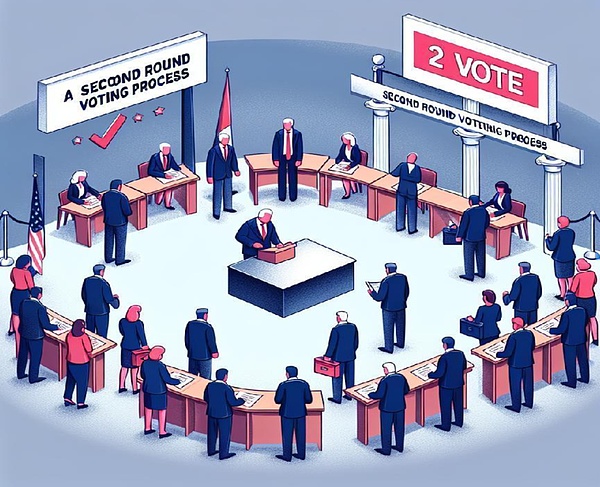
If decision-making governance is a democratic decision-making mechanism for the strategic direction of DAO, then task governance is a key method to ensure that the strategy can be implemented effectively.
The original intention of DAO is to achieve a project goal through innovative collaboration, so ensuring that each task and specific work can be successfully performed should be the focus of DAO.The DAO rules-making, tool use, collaborative culture and processes should all revolve around this core, so it is particularly important to recognize this, although DAO is a new organizational form, whose organizational goals are not different from traditional organizations.
Zhang Qun observed that many DAO organizations are trapped in the situation of DAO for the sake of DAO, and only emphasize technology and concept innovation and build a luxurious and complex user platform, which has no practical significance.In business practice, we explored four key elements methods to build a task governance model, called the TTAM four-element model.This model can cover almost all task management and labor collaboration, and effectively perform task evaluation and acceptance.The so-called four elements, namely the four dimensions of a work:Tasks, time, results, and remuneration.Tasks, time and results are process elements; while rewards are results elements, participating in the final exchange of value.The TTAM model is suitable for all task-based tasks.
1.Time (TIME)
Time is the delivery date is one of the key elements of any job.It accompanies the task and defines the time limit for task completion.The time element is not a one-time evaluation element, but a process element. Implementing time management helps to ensure that work is completed on time, improve efficiency, and ensure that resources are fully utilized.
2.Task (TASK)
Task formulation is a science.The task itself involves determining the work content, assigning tasks, setting priorities, and tracking progress.Task formulation must comply with SMART goal management principles, and the description must be specific, clear, detailed and accurate; the terms listed in task requirements must be able to be tested and verified.Each requirement should have a unique number so that it can be traced in future confirmations and tests.
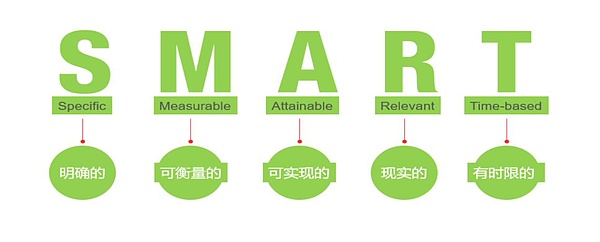
3.Achievement Evaluation (APPRAISAL)
Results evaluation requires a specific and measurable evaluation of the output of the task.Evaluation should not be completed in one go, but should be carried out throughout the task, through regular review and evaluation of task performance to identify problems, improve processes and ensure goals are achieved.The final review of the mission marks the closure and end of the mission.
To effectively manage and utilize member diversity, governance models need to consider diversity and inclusive management.We recommend grading task results: S+ represents excellence, S represents success, and F represents failure.
The evaluation of the results is distributed at each milestone node of the task and is eventually formed using weighting.At least three evaluations will be conducted during the planning period, the implementation period and the delivery period.The CAQ step evaluation method can be used and performed from the following three dimensions:
1) Correct direction:Work in the right direction.The direction is paired, which meets the task intention, and outputs are made in this correct direction.
2) Acceptable:The output (may be a design plan, middleware, physical product or a set of indicators) is acceptable, and the evaluation criteria are “usable”, “what you want”, and “can barely accept”.The ability to barely accept represents “acceptability”, which is the minimum standard that work results can tolerate.
3) Quality level:On an acceptable basis, the quality of the output is rated.The CAQ method uses step evaluation. If C fails to pass, stop the AQ evaluation, and if A fails to pass, stop the Q evaluation.
The CAQ evaluation correlates F and S in the results rating, C corresponds to F and S corresponds to A and Q respectively.
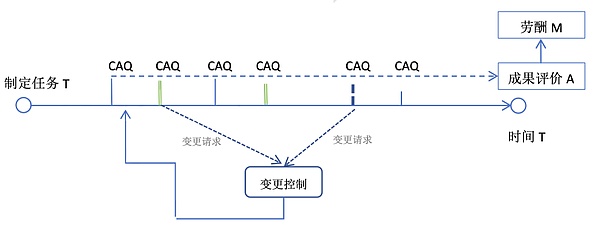
TTAM and CAQ diagrams
4.Remuneration (MONEY)
Remuneration is the reward given to workers who complete the prescribed tasks, which may be money or material or honor.After the results are reviewed and graded, the remuneration is directly related to the results.S+ results may receive an additional X% reward, S results are 70%-100% remuneration, while F-level tasks only receive basic labor remuneration, and the specific values can be defined by different organizations.
These four elements form the basic framework of DAO governance and can be adjusted and expanded according to specific circumstances.Managers can use these elements to plan, execute and supervise management activities.
From a business perspective, the initiation and ending of a work may include the following steps:
1) Set goals:Clarify performance goals and standards for your work and define goals using specific numbers and metrics, such as “increase sales by 10%.
2) Collect data and feedback:Collect data related to goals regularly and provide feedback to members to understand work performance.
3) Evaluation and discussion:Regularly discuss work performance with members, including discussions and feedback on the extent of goal achievement.
4) Provide support and improvement plans:Help members develop improvement plans and provide the necessary support and resources to improve work performance.
The TTAM model aims to support DAO governance, maximizing member collaboration outcomes through four basic steps, including target setting, data collection, evaluation and support.The model is easy to understand and implement, can be customized and extended to the needs of the organization, and the source of work process data may be a problem that DAO organizations need to consider.I will continue to explore the detailed architecture and implementation methods of the TTAM governance model in the future article.
The key to DAO success is the “object”
DAO embodies the beautiful vision of the majority of community members. This vision may be a beautiful sentiment, or a series of keywords such as truth, goodness and beauty, fairness, morality, and transparency.But after looking up at the starry sky, it can never stay out of business.Taking members into the profit channel is the key to DAO, and whether DAO has a subject matter is the key to whether it can continue and maintain long-term stability.
What is the subject matter of DAO? Why must there be a subject matter?The subject matter is the output on the DAO.Just like the early Chinese people’s commune, the apple trees planted by members, this tree has a lot of apples, and these apples are the subject matter of DAO.Simply put, it is actually a cake. Only with this cake can there be people who share the cake, and people who want to share the cake can there be real governance. Simple responsibilities and power have no meaning.DAOs without subject matter will not go long and it will be difficult to gather a wide range of members. Community development will definitely be full of obstacles.

The subject matter is the result on DAO. Generally speaking, this result is capital accumulation, and it can also be a successful business model.Uniswap can be regarded as the most primitive DAO. It forms a huge user community based on cryptocurrency transactions. Users who hold UNI can participate in governance decisions. Uniswap’s subject matter is UNI and exchanges.The long-term development of the world-renowned MakerDao is due to its subject matter Dai stablecoin, and the business model of decentralized lending; the continuous development of PermaDAO comes from the support of the Arweave Foundation, whose subject matter is funds; Aragon’s subject matterIt is its business model, and everyone can build a DAO organization through Aragon to make money.
As mentioned earlier, DAO is also one of the models of business management. No matter how big the ambitions of the community are or how complex the governance structure of DAO is, DAO must have the simplest thing, either the funds that can be allocated orA business model that continuously brings revenue is the core standard for the success of DAO.
DAO faces challenges?
DAO’s challenge is not only external, but more from itself.There is no single central authority in a decentralized organization, but decentralized network nodes or members participate in decision-making and management.In DAO, smart contracts and blockchain technologies are used to automatically execute organizational rules, process capital flows and record decisions.The goal of this model is to increase transparency, prevent single-point mistakes, and encourage wider community participation.In theory, organizational management can achieve full decentralization.
In some cases, most people may make more correct decisions, reflecting the so-called “Wisdom of the Crowd”.Smart crowdfunding believes that collective wisdom and experience in the group can lead to better decision-making results, exceeding the level of individual decision-making.
The decentralization concept of blockchain has been increasingly recognized.We can see that this decentralized structure that does not rely entirely on centralized institutions to implement control actually gives data higher transparency and security.
However, this does not mean that decentralization is the future, and centralization has no effect at all.
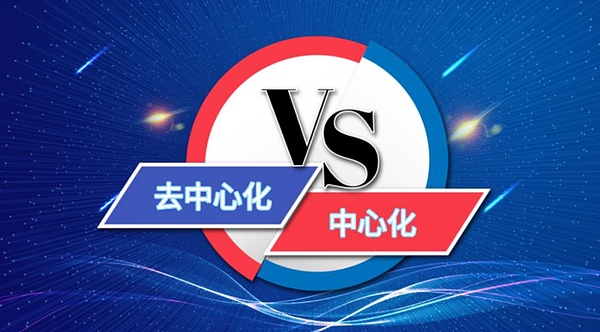
Smart crowdfunding is not true in all cases, it has some limitations and conditions.For example, group bias: If most people in a group are affected by the same information or bias, it may lead to group bias and reduce the accuracy of decision-making.At the same time, if there is information transmission or mutual influence between group members, it may lead to consensus within the group rather than truly independent opinions.
The reality is that individual decisions may be more accurate in many situations, especially when the problem involves a specialized field or requires specific skills and knowledge.In a centralized system, power is concentrated in a single subject, and this model is of great benefit in many cases.For example, centralization will be a more effective option for scenarios where rapid decisions must be made or a unified decision-making body is needed to ensure a rigid implementation of a certain policy.
Although DAO advocates decentralized autonomy and brings more innovative mechanisms and imagination space to people in production collaboration, we have to ask: Is it really our future? Does DAO have to take the decentralized route?
In the real world, fully decentralized organizational management also faces some challenges and problems:
1.Governance efficiency
Decentralized decisions can lead to slower decision making because consensus is required for most members.In some cases, this may be detrimental to the flexibility of the organization and the rapid response to changing needs.
2.Security and smart contract vulnerabilities:
Smart contracts may have vulnerabilities, leading to potential risks and fund security issues.Some decentralized autonomous organizations have experienced attacks in the past, which has attracted attention to security and the quality of smart contracts.
3.Community Differences:
In a fully decentralized environment, community members may have different perspectives and interests, which can lead to decision-making difficulties and community disagreements.
3.Compliance issues:
Some countries have challenged the regulatory and compliance issues of decentralized organizations and may need to find appropriate solutions to comply with local regulations.
Zhang Qun believes that mature DAO must be integrated with centralization and decentralization.DAO can adopt a partial centralized model in places where it cannot be completely decentralized, and introduce decentralized elements in situations where group wisdom is needed, and the result is distorted, and information is recorded and verified through blockchain.for increased transparency and security.
Despite these challenges, the development of decentralized organizations continues, and there are many projects and communities that are exploring how to address these issues to enable a more rational decentralized organization.
Where to go DAO
1.Member engagement and influence are enhanced.
Through its unique governance structure, the DAO model gives community members greater engagement and influence.According to DeFi Pulse data, MakerDAO’s total locked value (TVL) has exceeded $5 billion as of 2023, reflecting its huge participation and market influence.
In the future, with the development of blockchain technology, we expect more similar DAOs to emerge, in which direct participation of members will become the norm, thereby promoting the democratization and efficiency of the organization.
2.Legal status and regulatory framework are clarified.
Currently, the legal status of DAO remains in a blur, but as its influence grows, a legal and regulatory framework specifically targeting DAO is expected to emerge.In 2023, Wyoming, the United States, passed a series of bills on DAOs, aiming to provide a clear legal framework and operational guidance for DAOs.More jurisdictions are expected to adopt similar legislative initiatives in the future, thereby providing a more stable and reliable legal environment for the operation of DAOs.
3.Diversification of application scenarios.
DAO’s future application areas will no longer be limited to blockchain and cryptocurrency project management.For example, DAO in the art field is gradually emerging, represented by PleasrDAO.PleasrDAO is an organization that collects and manages digital art works, demonstrating its influence in art collection and management by purchasing and owning important digital art works, such as the NFT of The New York Times.As of 2023, PleasrDAO has successfully acquired several important digital art works, demonstrating DAO’s application potential in the field of art.We expect that in the next five years, more industries such as education, charity, environmental protection, etc. will gradually adopt the DAO model.
4.The integration of DAO and traditional enterprise structures.
DAO will not only exist as an independent organizational model, but may also integrate with traditional enterprise structures.We have seen some traditional enterprises begin to explore the introduction of DAO elements.For example, Reddit introduced blockchain technology into its community points system, allowing users to directly participate in community governance through tokens, reflecting the application of DAO elements in traditional enterprises.In the future, more companies may try to partially or completely transform into a DAO model to improve transparency, efficiency, and user engagement.
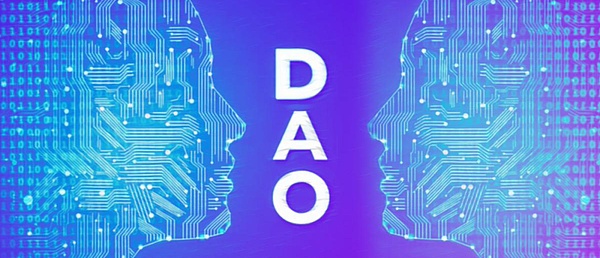
Summarize
In the future, with the further maturity of blockchain technology and the improvement of legal framework, DAO has great potential for development.As an indispensable part of the blockchain and Web3.0 ecosystem, DAO may realize innovative applications in multiple fields, such as enterprise management, community governance, charity, etc.We also look forward to the emergence of more experimental projects and innovative solutions to meet current challenges and promote the DAO model toward more mature and widespread application.DAO represents a future possibility for an organization, and its evolution will be an important indicator of blockchain technology’s impact on social structure.With more innovations and practices emerging, DAO will show its unique charm and a bright future in various fields.



